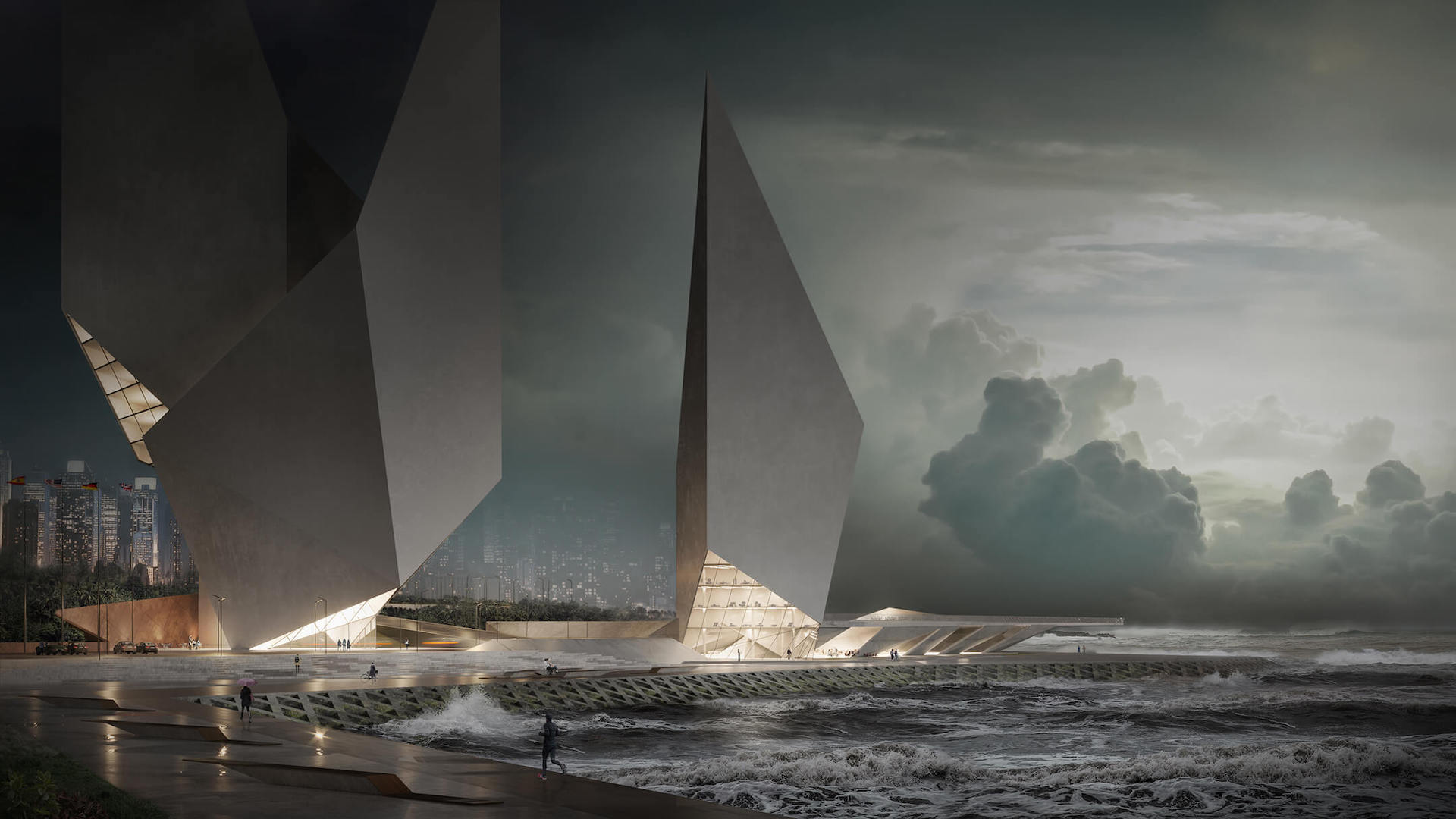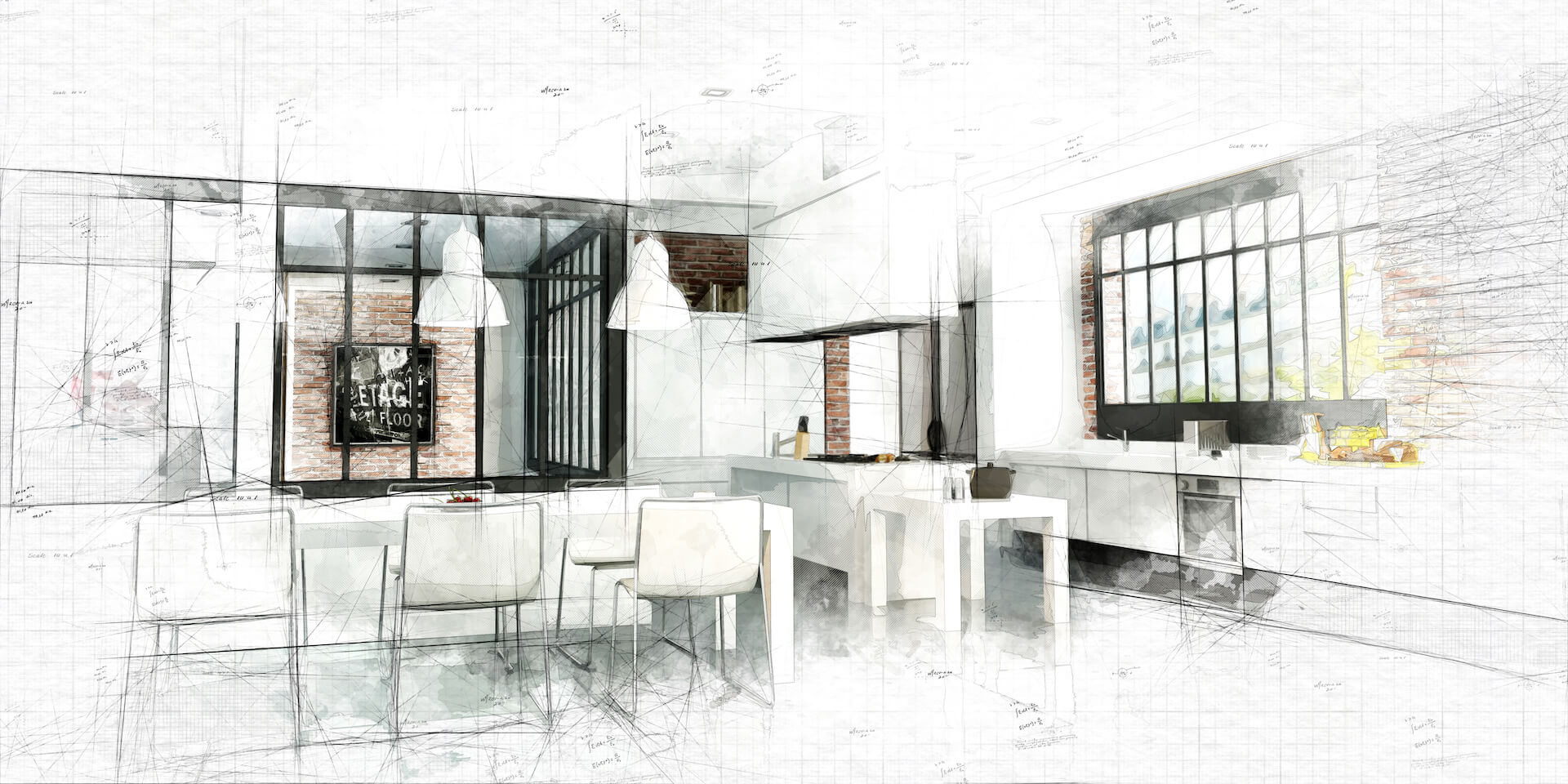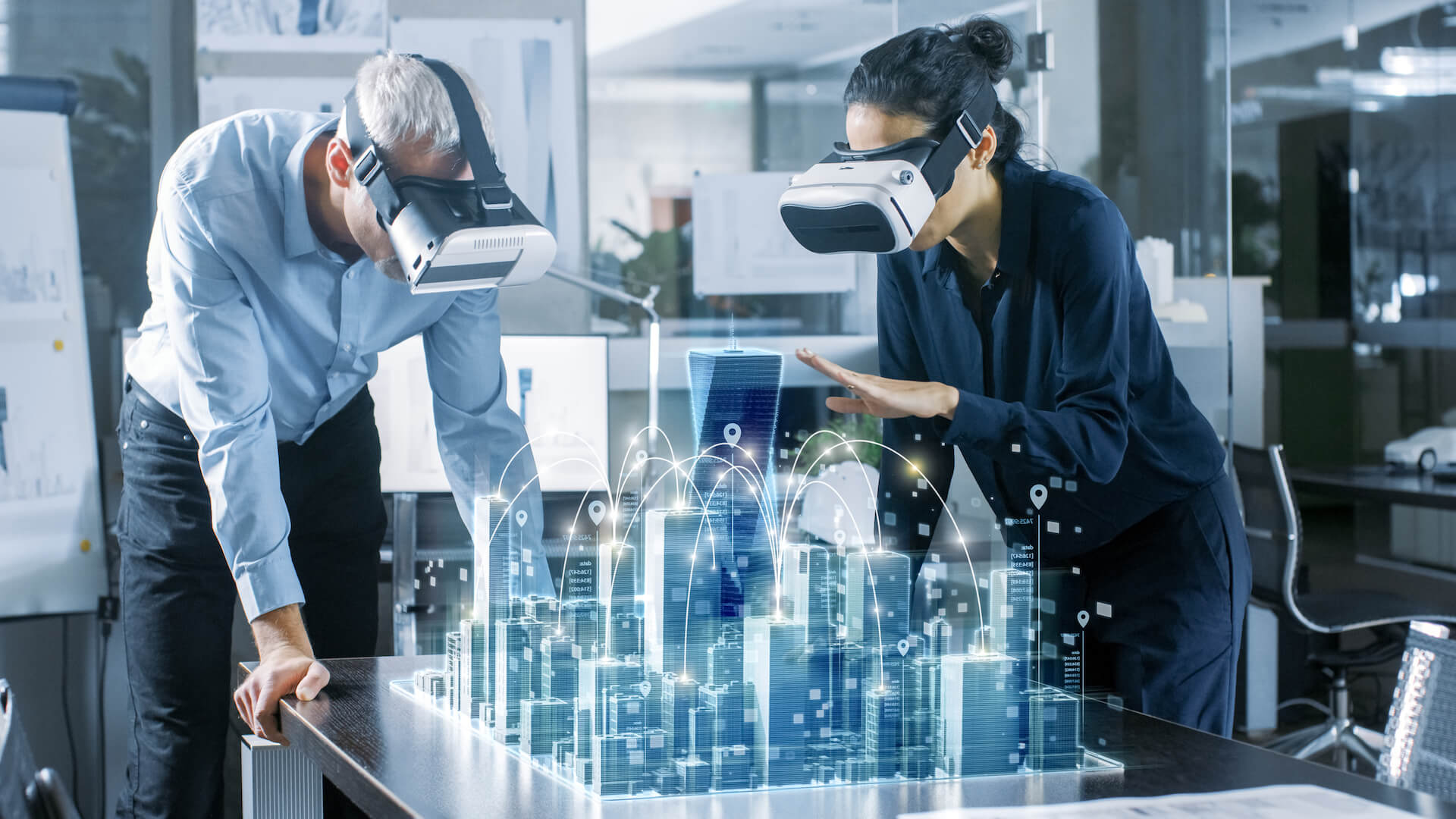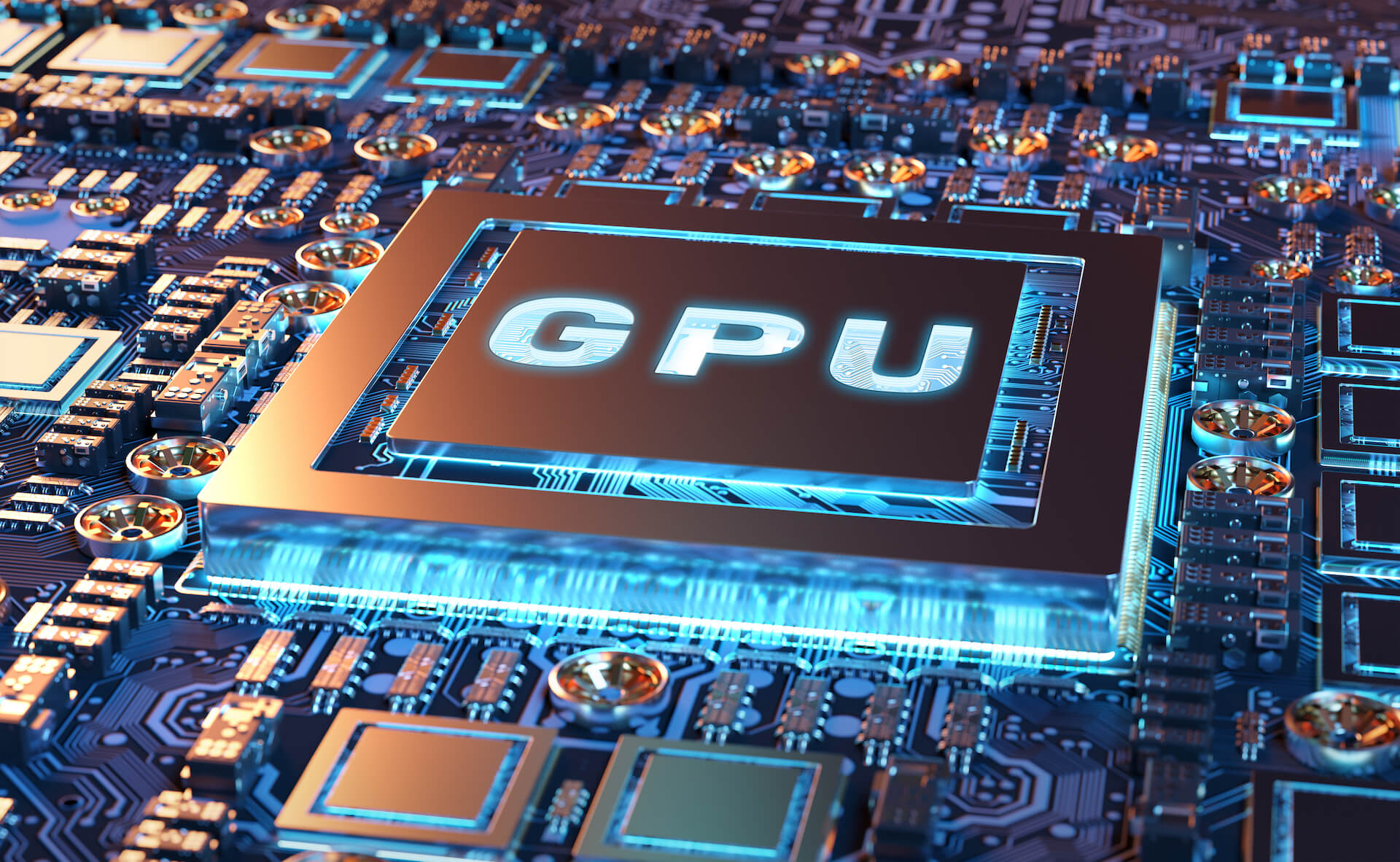This year, architecture and real estate businesses that use CGI are in for some exciting novelties. While 3D rendering is already the top solution for visualization of yet-to-be-built properties, new technologies are offering ways to make it even more time- and cost-efficient than it is now. Then, in terms of content formats, some of the major architectural rendering trends of 2021 are about creating interactive and immersive experiences. On top of that, the variety in ways of artistic expression in CGI is now greater than ever. It allows for creating absolutely unbelievable visuals that tell stories and win the hearts of viewers from the very first sight.
As an architectural rendering company, we want our clients to know about the benefits the new tendencies can offer. Because the innovations that we’re about to discuss in this article can truly help them get more attractive and engaging visual content compared to what was possible before. Moreover, next-gen technologies allow reducing CGI project expenses and waiting time a great deal. So, without further ado, let’s take a look at the 6 hottest 3D rendering trends and the possibilities they open!
Impressive Ways of Artistic Expression
Let’s start with the artistic architectural rendering trends. After all, 3D visualization is an art form. And every stylistic choice made in the course of a 3D rendering project affects the way the final visuals will be perceived.
#1. Storytelling Is Here to Stay

One of the most important architectural rendering trends in 2021 is storytelling. This tendency is not brand-new, but it continues to live and is not going anywhere any time soon. Take even the latest contest by CGarchitect — the main global archviz platform. The winning 3D render, as well as the shortlist of nominees, show amazing and complex stories. There’s so much thought and aesthetic in every image that you can look at them a hundred times and still be mesmerized. Therefore, if you want your project presentations or real estate ads to appeal to the very emotions of your clients or prospects, you definitely should tap into the power of storytelling provided by 3D rendering for real estate agents.
#2. Watercolor and Other Types of Artistic Rendering

Today, as we’re getting more and more used to seeing hyperrealistic architectural renders, quite a few architects are beginning to feel nostalgic about traditional means of visualization. Recently, we personally heard about it being one of the hottest current trends from Bogdan Sasu, a renowned 3D artist and author of “Great Talks About Photorealism”. In the interview he gave us, Bogdan said that he’d noticed a “going back to the roots” movement in architectural 3D rendering.
For instance, he had several clients lately who asked for stylized CG images imitating sketches and watercolors. And, coming to think about it, why not? The power of artistic expression is absolutely limitless with CGI. So, right now, many specialists are getting creative with their renders to make outstanding project presentations and real estate marketing materials.
Innovative Content Formats
Now, let’s move on to the content formats that are trending in 2021 in the architecture and real estate industries. In this part of the article, we’ll talk about 2 major architectural rendering trends that take 3D visualization to a whole new level.
#3. Augmented Reality

In 2021, we’re seeing an increase in the use of AR technology in the architecture industry. Architects are beginning to widely use augmented reality to present design concepts to their clients in an absolutely new way. For instance, they can go to the future construction site where nothing’s built yet and view a fullscale 3D model of a building right where it’s going to be. And that requires nothing but a smartphone or a tablet with one of the multitudes of AR apps that are incredibly simple to install and use. Overall, such an experience can just be the key to getting a green light for an architectural project.
#4. Virtual Reality

Naturally, we can’t discuss architectural rendering trends without mentioning the growing popularity of VR technology in the industry. It can be used to showcase concepts to clients, as well as improve on-site communication with construction teams. Overall, VR creates an immersive and interactive experience, which is valued greatly nowadays. That’s why many providers of architectural visualization services are already offering the creation of VR-ready assets.
Ensure your exterior design project leaves a lasting impression and takes your clients’ breath away with stunning visuals.
But there’s more to it. Some tech companies are developing VR apps that can be used as collaborative real-time design tools. Which is a groundbreaking solution for AEC professionals in the wake of the Covid-19 pandemic. One of the most prominent apps of this kind is Arkio. It allows you to import 3D models directly from Revit and to work on designs remotely with your team. Using a VR headset and a pair of controllers, you can even stand inside the building you’re creating and experience your design iterations at full scale. With all the possibilities that offers, one might argue that collaborative VR platforms are the future of architectural development.
Innovations In Technical Means
In this part, we’ll talk about the cutting-edge improvements in some of the technical aspects of CGI production. Knowing about those architectural rendering trends can help the specialists in architecture and real estate fields choose the most suitable provider of 3D visualization services in terms of quality and speed of work.
#5. Cloud Rendering Is Seriously Competing with In-House Rendering

Next on our list of top architectural rendering trends of 2021 is cloud rendering. It’s a great technological solution that allows a provider of 3D visualization services using the power of a remote computer cluster to render CG imagery. Cloud rendering is an on-demand service, which means that one can have access to almost unlimited resources of numerous CPUs and GPUs to work on their files, but only for the time it takes to render the visuals. That allows for optimizing the allocation of computing power, making the whole rendering process incredibly fast.
Many specialists in the field of CGI production note that using cloud rendering, they get their 3D renders in just minutes, while the same thing would take hours when they used in-house render farms. This way, 3D artists can work on more projects at the same time. And that means a lot to architecture and real estate professionals, whose communication with their project stakeholders significantly improves when they can present design iterations and updates faster.
According to a survey by Chaos Group, cloud rendering services are expected to have a 24% growth rate year to year up to 2025. So, we can say that the revolution of ultra-fast visualization is definitely happening, and it will probably become a norm quite soon.
#6. GPU-Based Rendering Is Slowly But Surely Replacing CPU-Based Visualization

First things first, let us explain the terms here. CPU, or central processing unit, is the main processor of a computer. You can think of it as the brain of every machine. Then, there’s GPU, or graphics processing unit. It renders the visuals that come up on the display and helps the CPU with its calculations. Both types of processors are very powerful. But due to its structure, the CPU can only work on one bit of data at a time. Which makes it good at executing processes in sequence. At the same time, the GPU’s structure allows it to perform parallel processing. So, the unit can carry out multiple tasks at the same time.
Now, what does that mean? Essentially, it means that using GPU for 3D rendering, one can get the results much faster compared to doing the same with CPU. And that’s why the use of GPU in this context has recently become one of the hottest architectural rendering trends. Many 3D artists and whole 3D visualization studios are switching to GPU-based rendering engines, such as Redshift and Fstorm. However, the traditional CPU-based engines, such as Corona Renderer and V-Ray, still remain very popular.
For a client of an architectural rendering studio, GPU-based rendering means a much quicker turnaround time. We’re talking about saving hours here. The only downside, in this case, is that the quality of the visuals produced this way can be a bit lower compared to that of imagery created with CPU-based rendering. Still, it’s possible to fix a lot of the issues at the post-production stage. Plus, developers of GPU-based renderers are constantly working on improving the output of their software’s work. So, get ready for receiving your marvelous CGI at lightspeed!

Those were the 6 main architectural rendering trends of 2021. We personally feel excited about all of them, to say the least. And you should be too! Because this is the era of new possibilities, such as ultra-fast rendering, immersive CG content, and limitless artistic expression. So, don’t hesitate to use CGI for your work, and you’ll get stunning results measurable in completed projects and sold properties.
Showcase your architectural project like a true work of art, brought to life with cutting-edge AI-powered CGI technology.
Looking for top-tier 3D services? Contact us at ArchiCGI and get CG images of the highest quality within the shortest amount of time possible!

Ana Wayne
Content Writer, Copywriter
Ana is a content writer for ArchiCGI. She has a passion for design and architecture - and for talking about it. Outside of work, she is a fan of sci-fi movies and a street food connoisseur.



